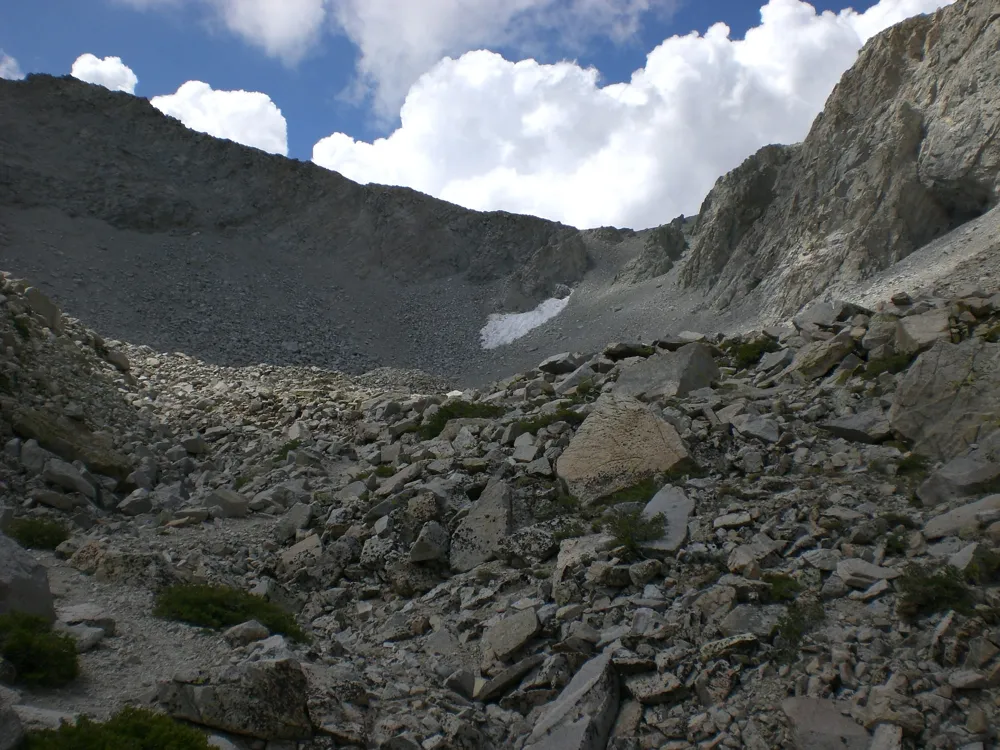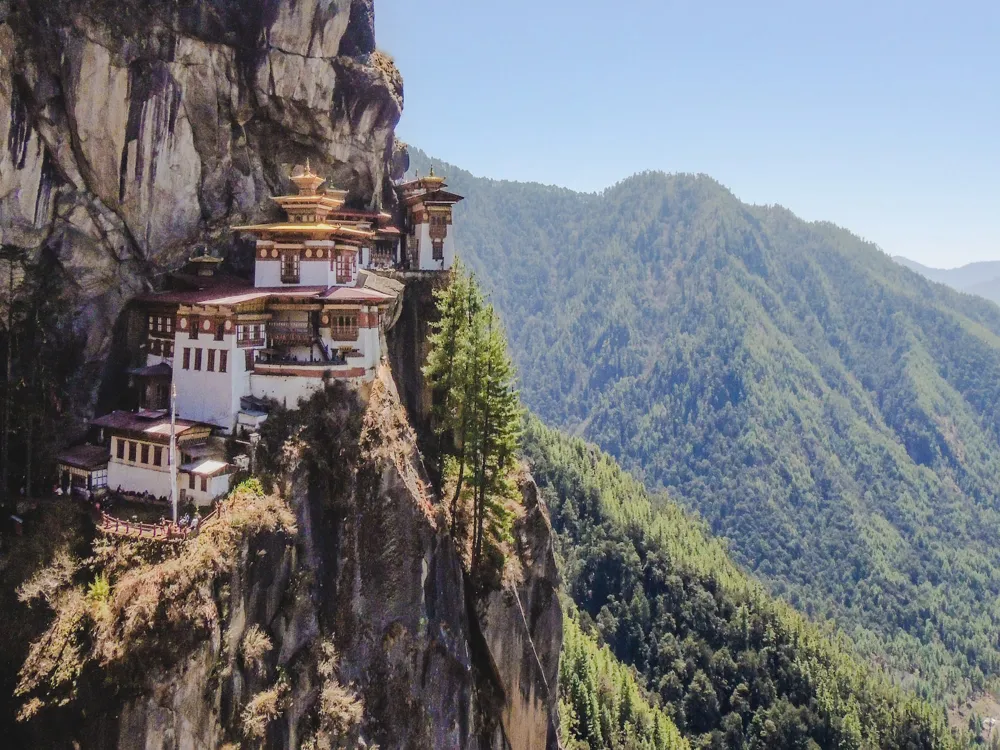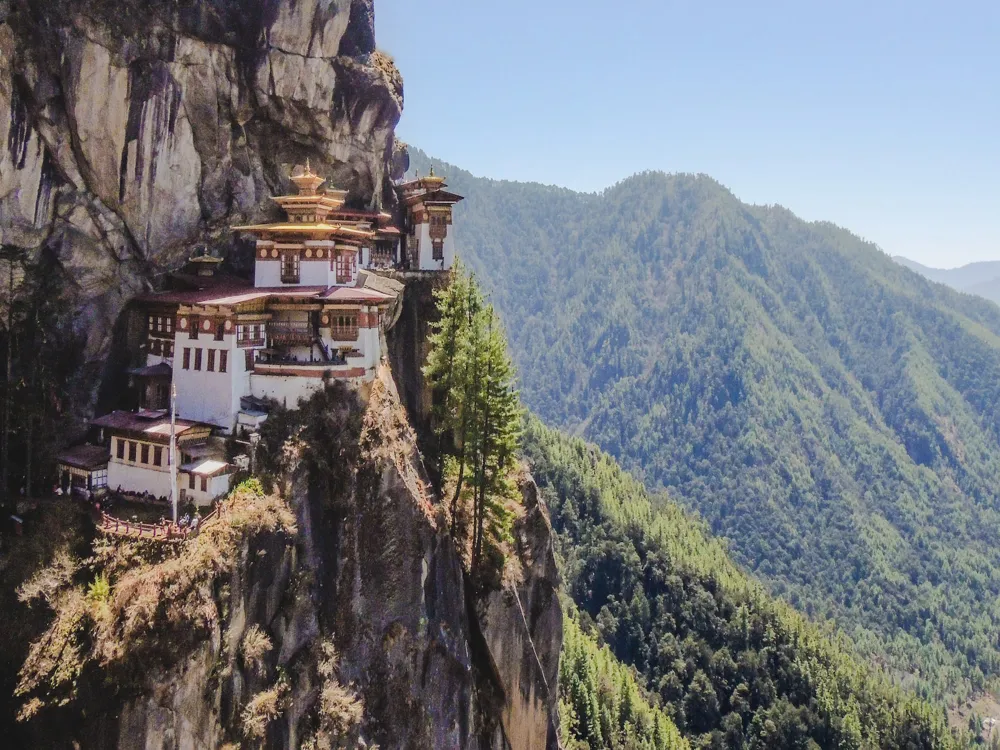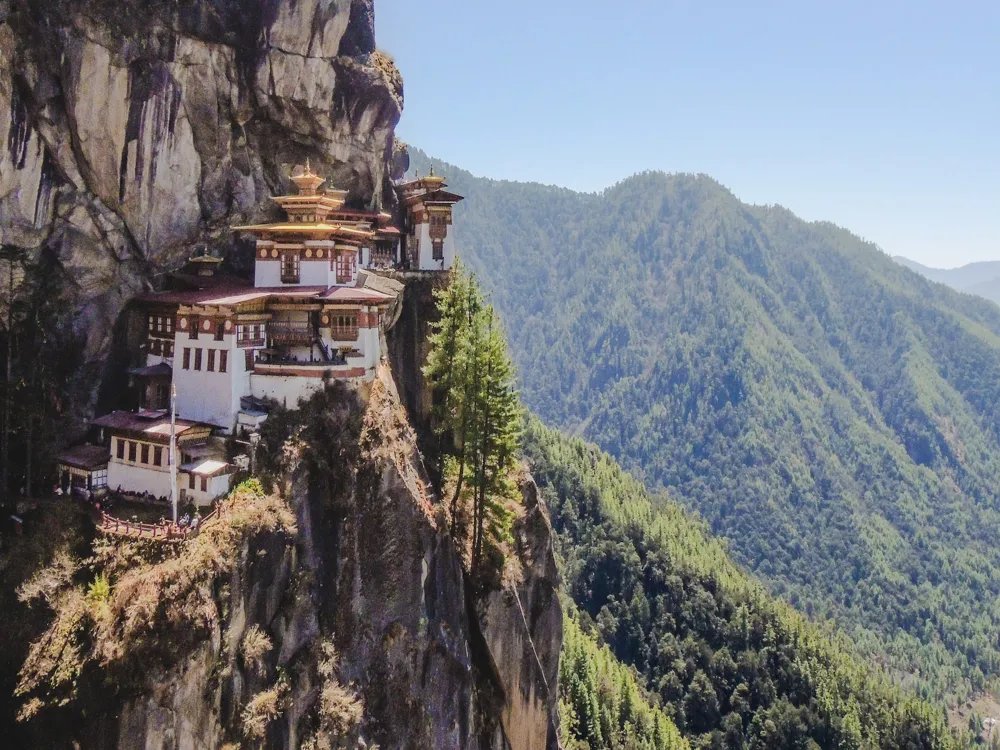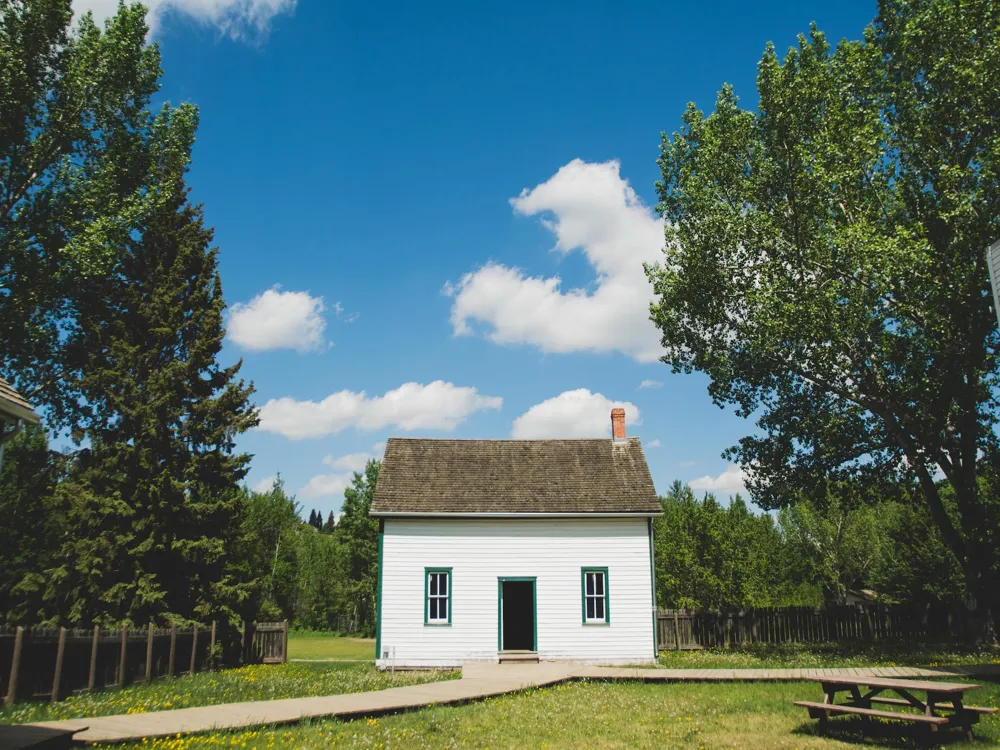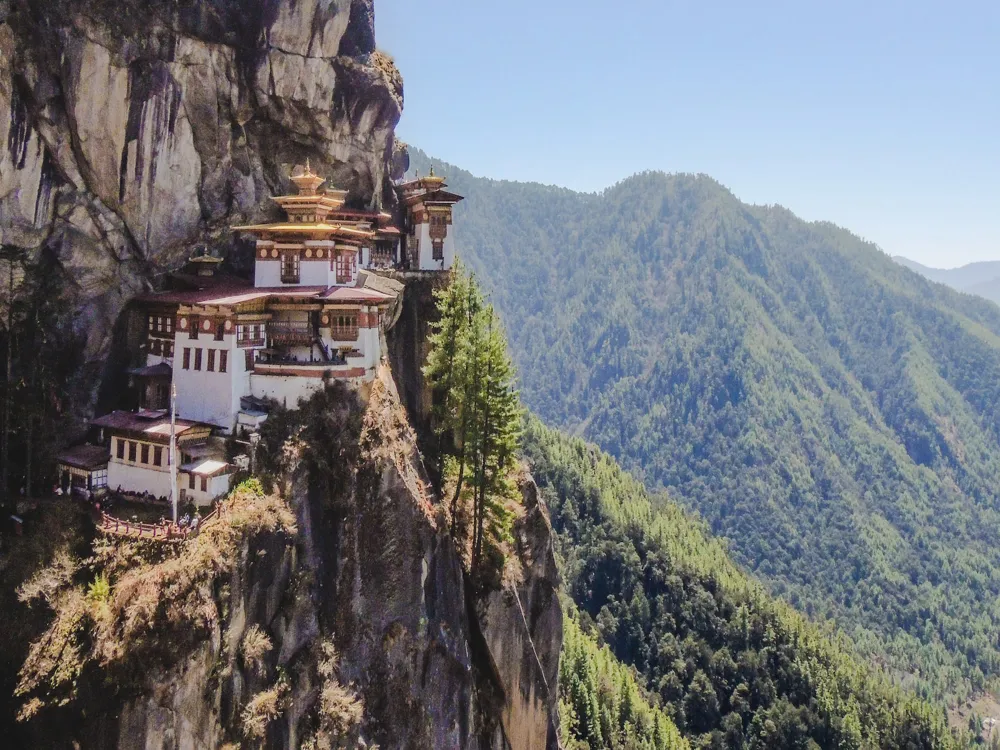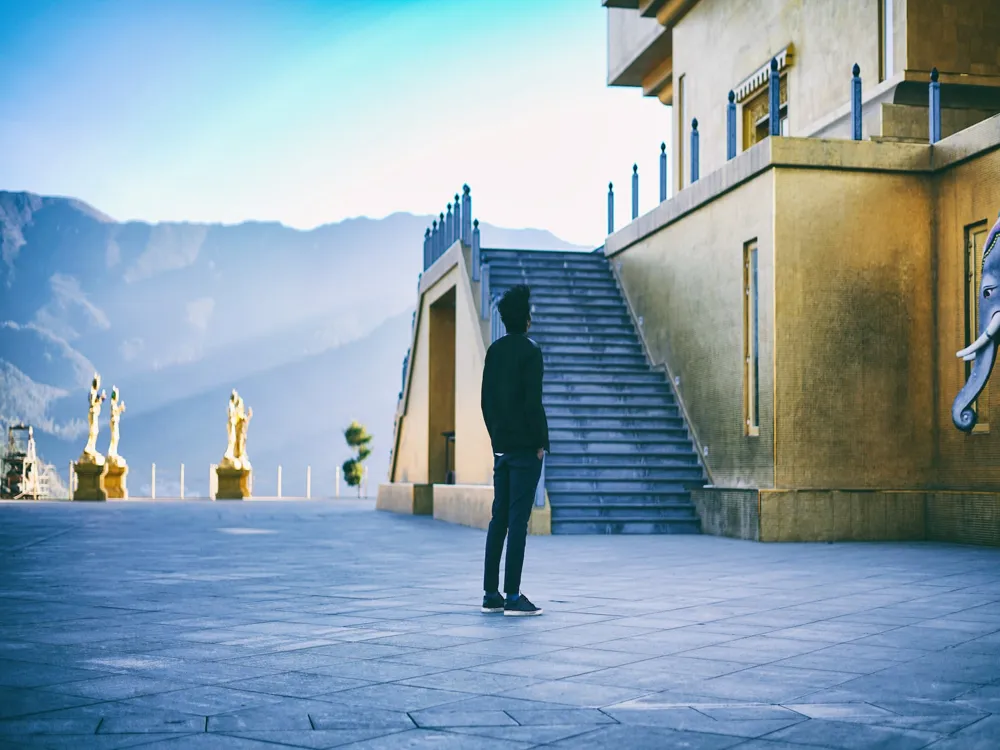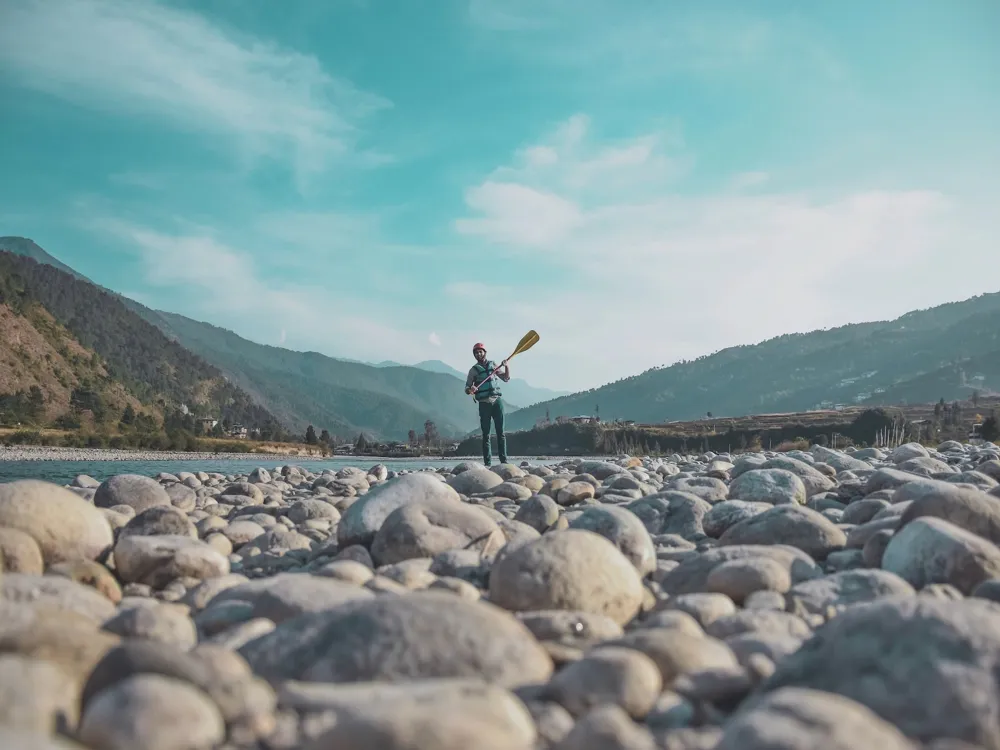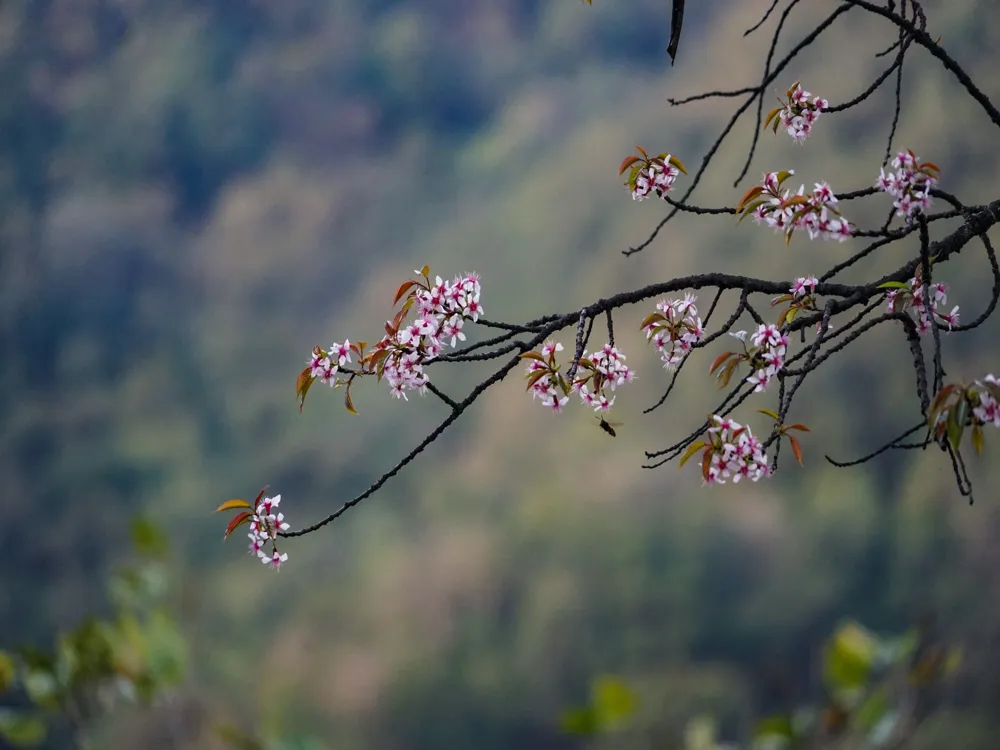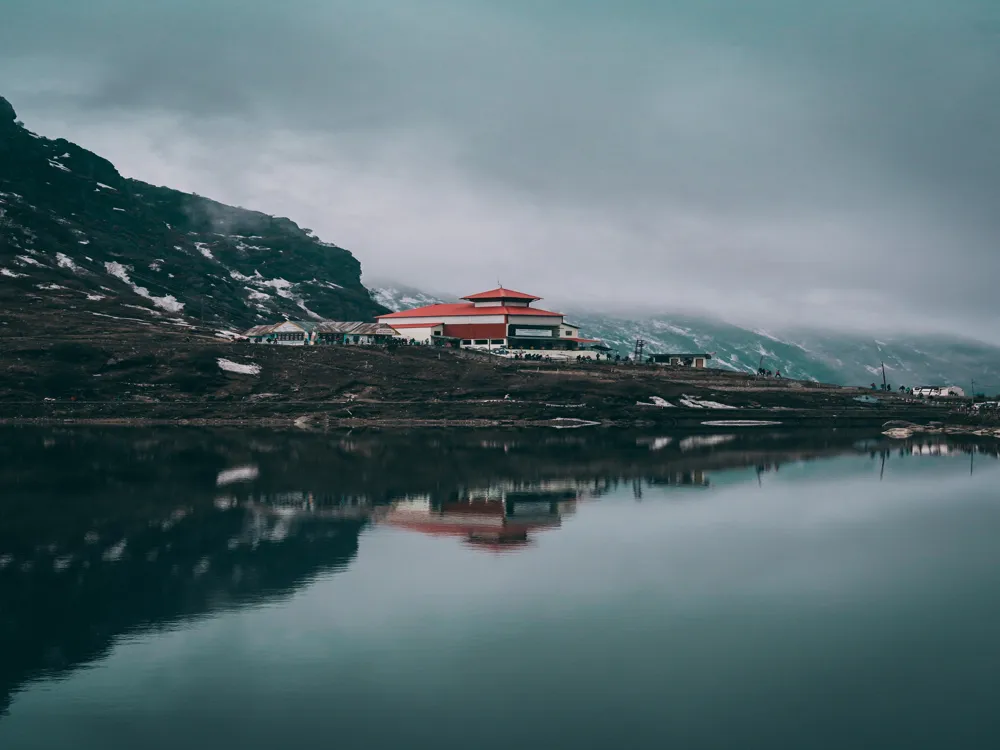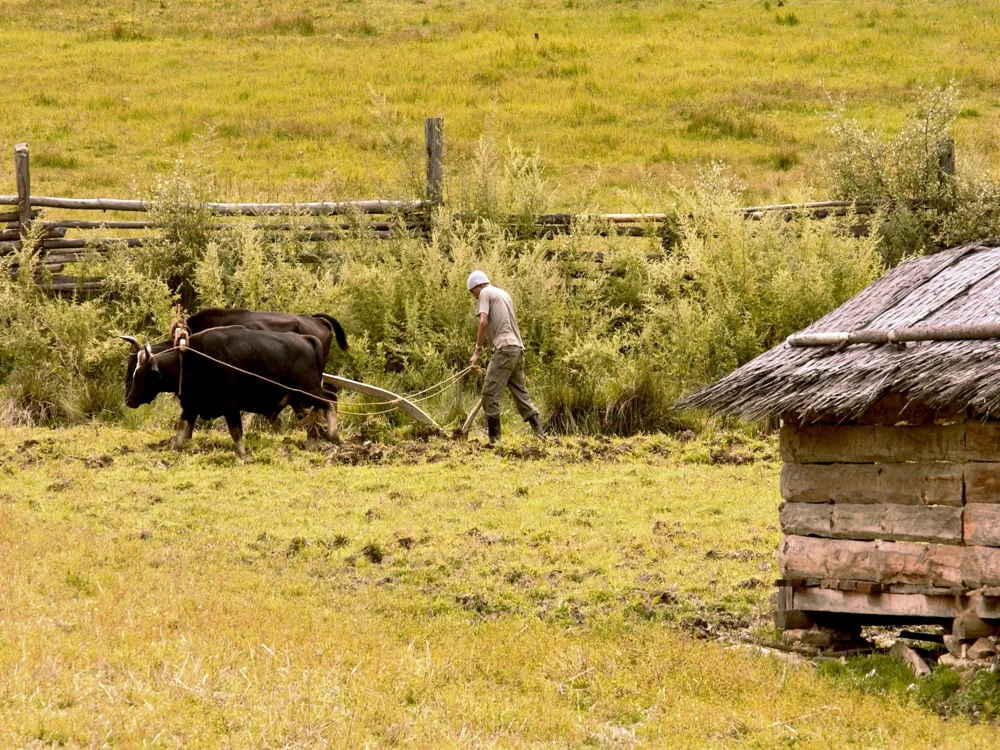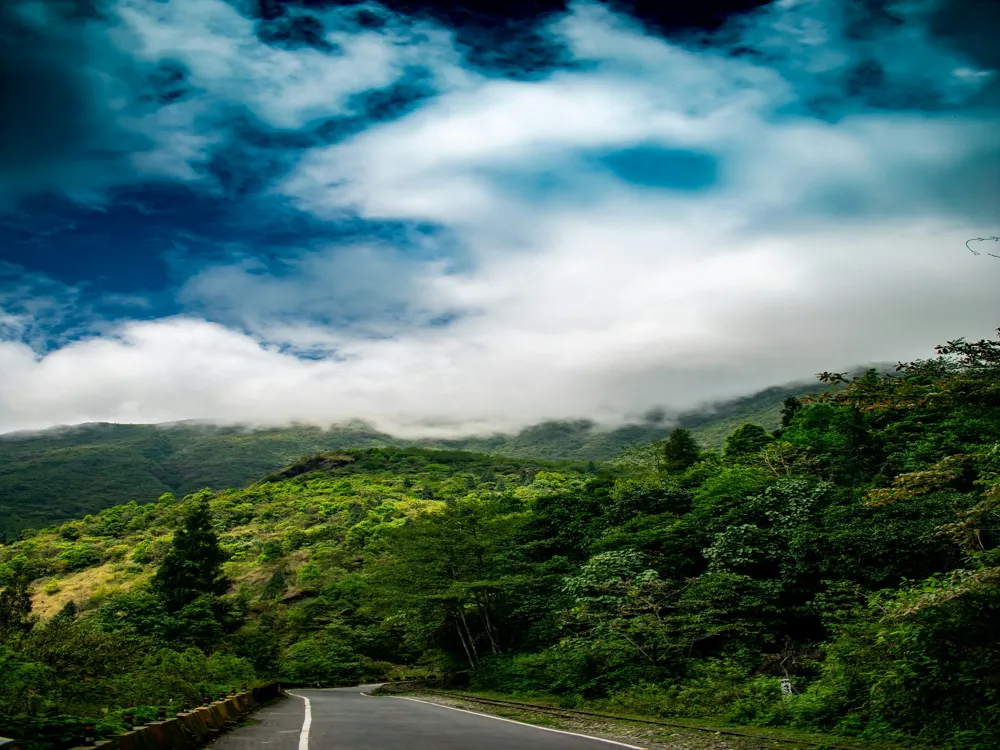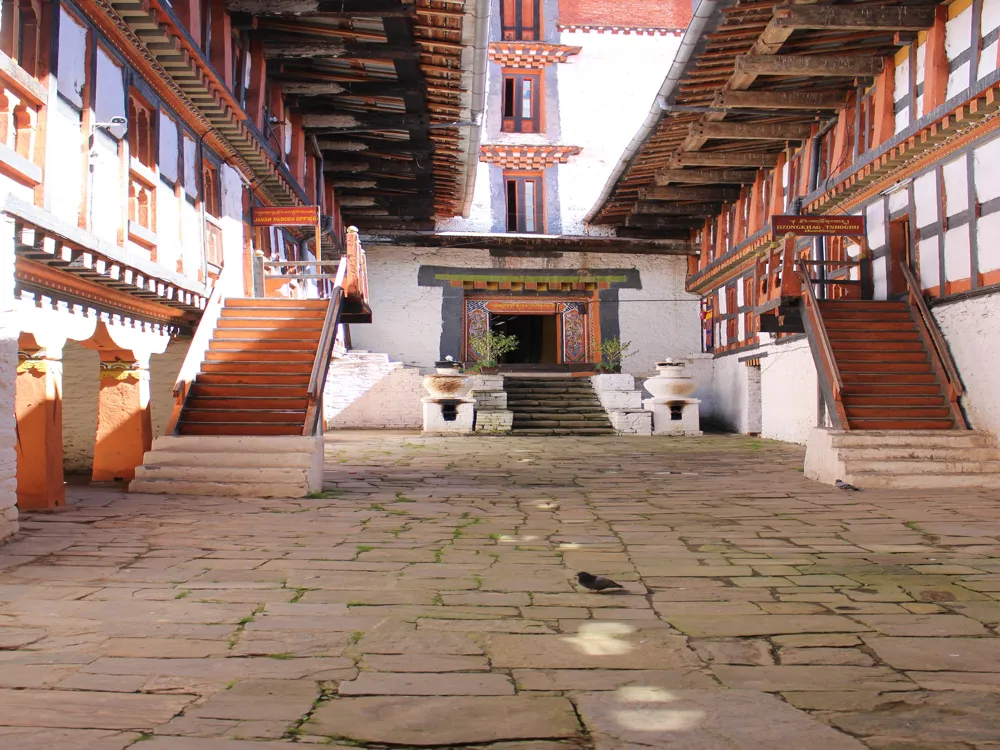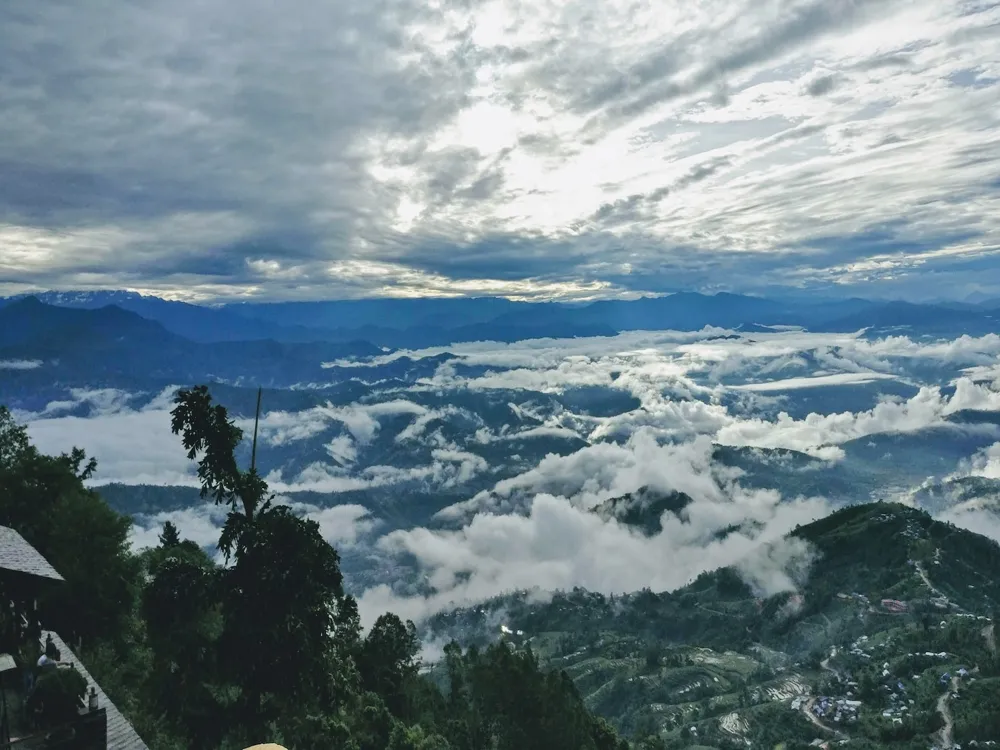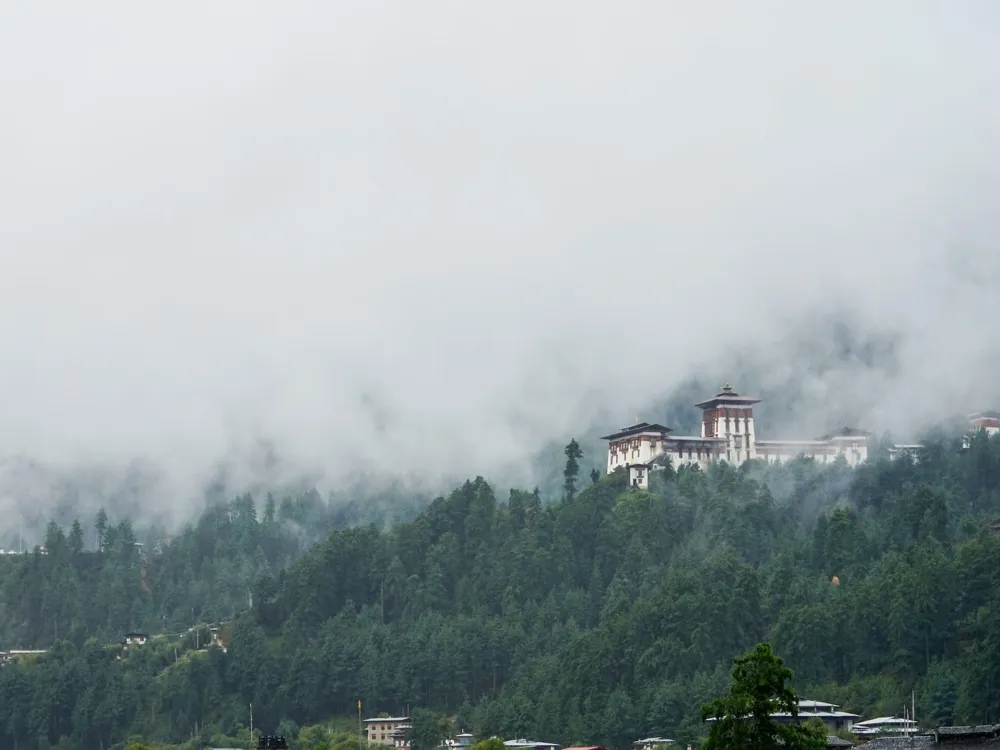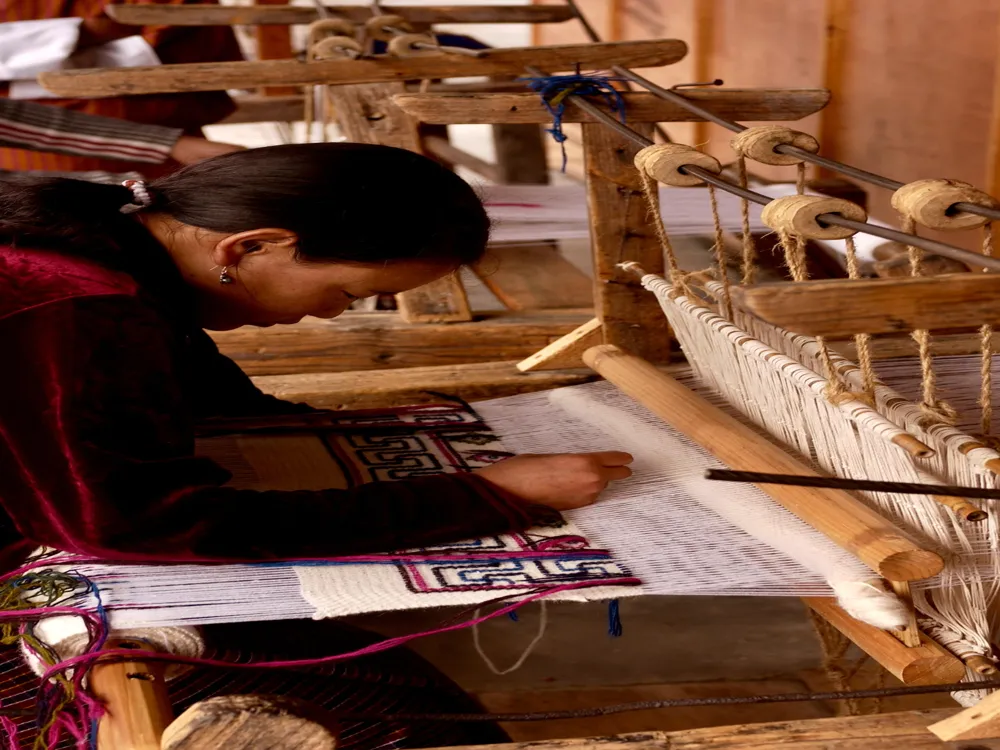Tachogang Lhakhang Bridge, also known as the Iron Chain Bridge, is a significant historical and cultural landmark located in Paro, Bhutan. This unique bridge, believed to have been built in the early 15th century by the revered Tibetan saint Thangtong Gyalpo, is a symbol of the ancient engineering prowess and spiritual heritage of Bhutan. Thangtong Gyalpo, known for constructing numerous iron chain suspension bridges across the Himalayas, aimed to connect remote communities and promote pilgrimage routes. The Tachogang Lhakhang Bridge spans the Paro River and leads to the Tachogang Lhakhang (temple), a sacred site that draws pilgrims and tourists alike. The bridge's construction is a marvel of traditional Bhutanese architecture. Originally built with iron chains, the bridge underwent several restorations over the centuries. Today, it features a combination of iron chains and modern suspension bridge techniques, ensuring both safety and a touch of historical authenticity. Walking across the bridge offers breathtaking views of the Paro River and the lush valley, providing a serene and picturesque experience that captivates visitors. Apart from its architectural significance, the Tachogang Lhakhang Bridge holds spiritual importance for the Bhutanese people. It represents the connection between the earthly and spiritual realms, symbolizing the journey of life and the path to enlightenment. The bridge is often adorned with colorful prayer flags, which flutter in the wind, carrying prayers and blessings to the heavens. The temple at the end of the bridge, Tachogang Lhakhang, is a revered site dedicated to Thangtong Gyalpo, housing many ancient relics and sacred artifacts. Visiting the Tachogang Lhakhang Bridge offers a unique insight into Bhutan's rich cultural and spiritual heritage. It's a journey that takes one back in time, allowing visitors to experience the ancient traditions and architectural ingenuity of Bhutan. The bridge is not only a physical structure but also a symbol of Bhutan's resilience, spirituality, and the interconnectedness of its communities. The architecture of Tachogang Lhakhang Bridge is a testament to the ingenuity and skill of Bhutanese craftsmen and the visionary saint, Thangtong Gyalpo. The original structure, built from iron chains, was a pioneering design in the field of suspension bridges. The chains were forged by Thangtong Gyalpo himself, a feat that was both innovative and spiritually significant. These chains were anchored into the rocky riverbanks and covered with wooden planks, creating a sturdy yet flexible walkway that could withstand the elements and the test of time. The bridge's architecture is deeply intertwined with Bhutanese spiritual beliefs. The iron chains are said to represent the unbreakable bonds of compassion and wisdom, essential principles in Mahayana Buddhism. The rhythmic sway of the bridge as one walks across it is believed to symbolize the transient nature of life, reminding pilgrims of the impermanence of worldly existence. In its current form, the Tachogang Lhakhang Bridge incorporates modern engineering while maintaining its historical essence. The iron chains are now complemented with steel cables and reinforced wooden planks, ensuring safety for visitors. The integration of traditional and contemporary architectural elements showcases Bhutan's ability to preserve its heritage while embracing modern advancements. The design of the bridge also takes into account its natural surroundings. The choice of materials and the construction techniques employed were aimed at minimizing environmental impact, thus preserving the pristine beauty of the Paro Valley. The bridge's aesthetic, with its rustic chains and wooden planks, blends seamlessly with the landscape, creating a harmonious balance between man-made structures and nature. When visiting Tachogang Lhakhang Bridge, it's essential to show respect for local customs and traditions. Dress modestly, remove shoes before entering temples, and always walk clockwise around religious structures. The best time to visit the bridge is during spring (March-May) or autumn (September-November) when the weather is pleasant, and the views are clear. Photography is allowed on the bridge, but always ask for permission before photographing people or inside temples. Some areas may have restrictions on photography. While the bridge is safe, it can be slippery during rain. Wear appropriate footwear and be cautious while walking. Interacting with local people can enrich your experience. Bhutanese are generally friendly and happy to share stories about their culture and traditions. Tachogang Lhakhang Bridge is easily accessible from Paro. The most common way to reach Paro is by flying into Paro International Airport, which is well-connected with major cities in Asia. From Paro, the bridge is just a short drive away. Visitors can hire a taxi or join a guided tour to reach the site. For those interested in trekking, a scenic trail leading to the bridge offers a more adventurous route. The hike provides stunning views of the Paro Valley and is an excellent opportunity to immerse oneself in the natural beauty of Bhutan. Read More:Overview of Tachogang Lhakhang Bridge
The architecture of Tachogang Lhakhang Bridge
Tips When Visiting Tachogang Lhakhang Bridge
Respect Local Customs and Traditions
Best Time to Visit
Photography Etiquette
Safety Precautions
Engage with Locals
How To Reach Tachogang Lhakhang Bridge
Tachogang Lhakhang Bridge
Paro
₹ 19,500 onwards
View paro Packages
Weather :
Tags : Bridge
Entry Fee : No Entry Fee
Planning a Trip? Ask Your Question
Paro Travel Packages
View All Packages For Paro
Top Hotel Collections for Paro

Private Pool

Luxury Hotels

5-Star Hotels

Pet Friendly
Top Hotels Near Paro
Other Top Ranking Places In Paro
View All Places To Visit In paro
View paro Packages
Weather :
Tags : Bridge
Entry Fee : No Entry Fee
Planning a Trip? Ask Your Question
Paro Travel Packages
View All Packages For Paro
Top Hotel Collections for Paro

Private Pool

Luxury Hotels

5-Star Hotels

Pet Friendly







